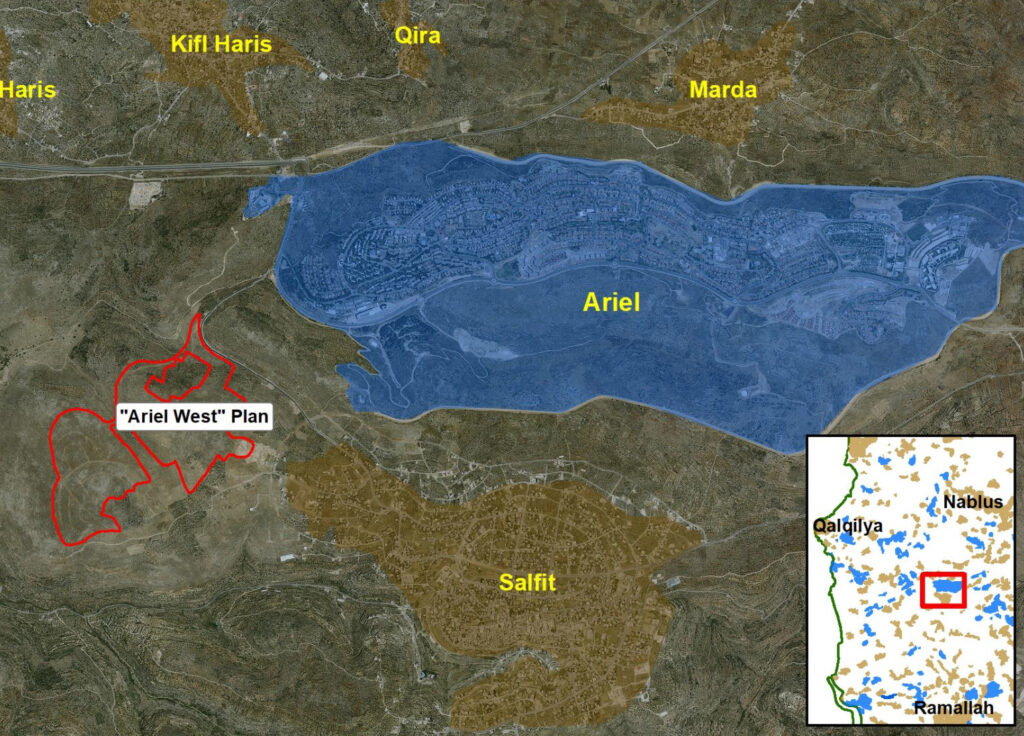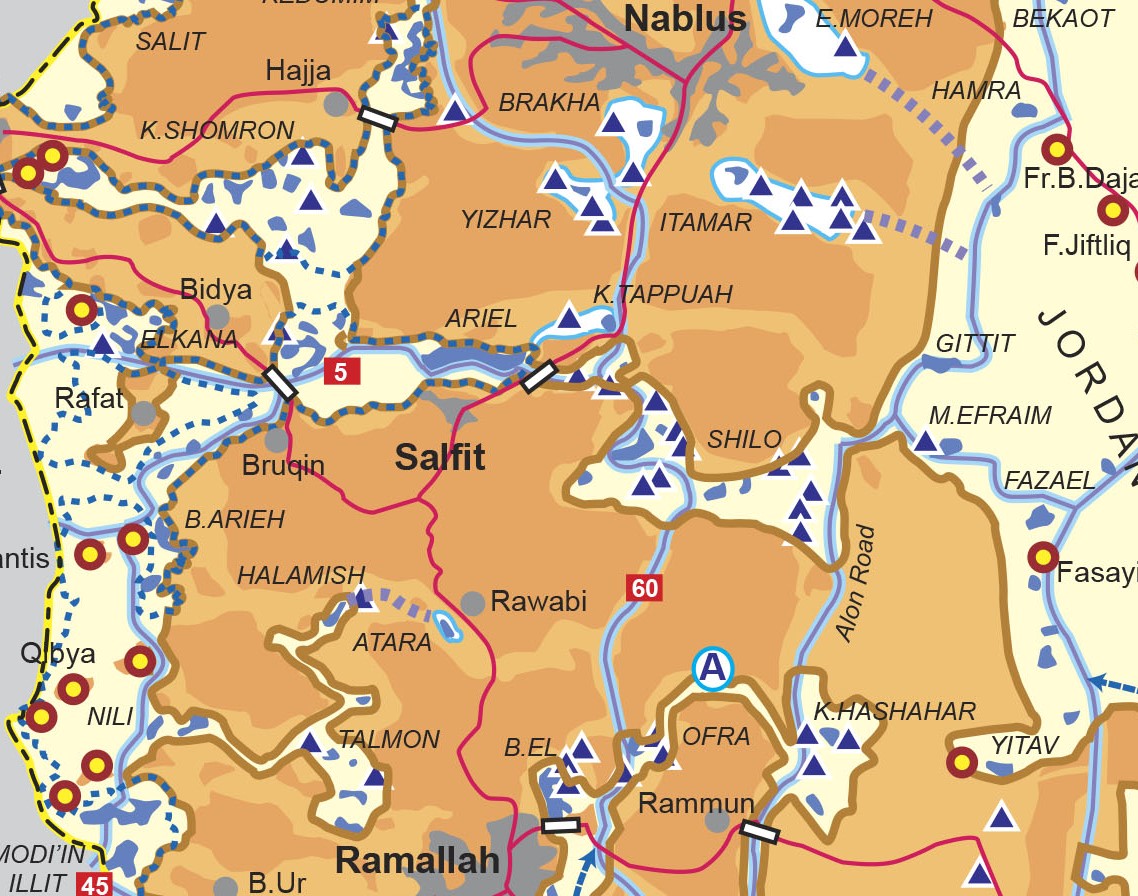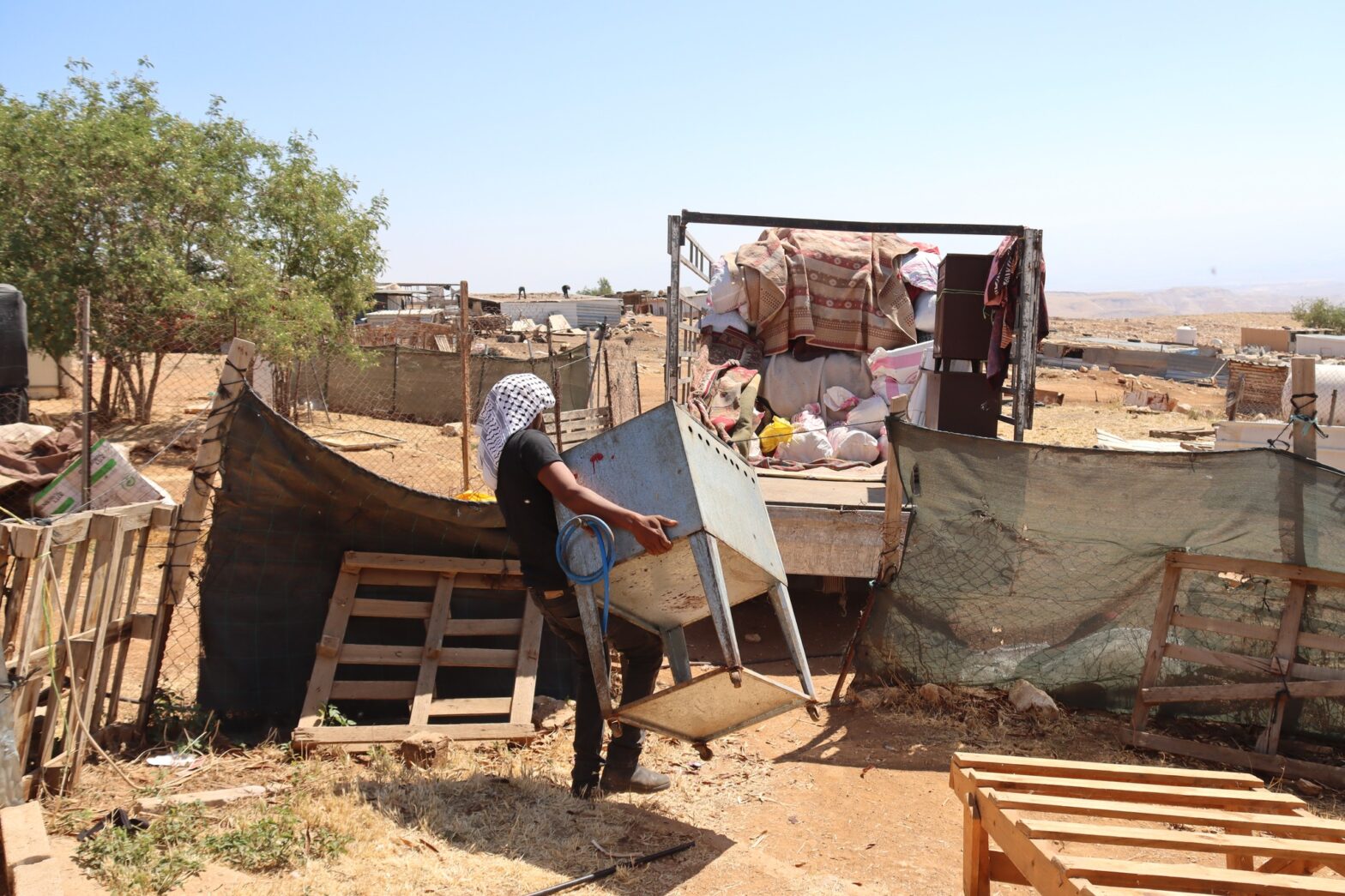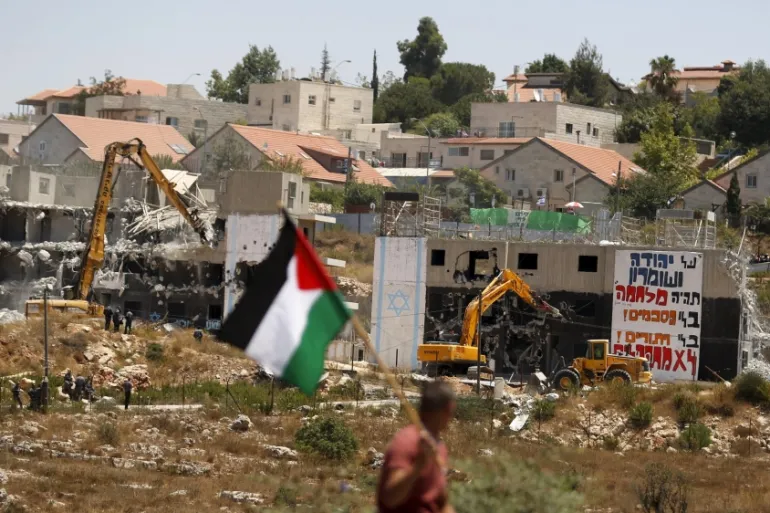On March 9, the council of the illegal settlement Ariel announced the “Ariel West” (or “Amirim”) project, a massive expansion plan involving 11,000 new housing units on 2,000 dunams of Palestinian land in the Salfit governorate of the occupied West Bank. The plan also includes public parks, educational institutions, and green spaces. This is part of Israel’s ongoing settlement expansion, which has intensified amid the devastating Gaza genocide.
In recent weeks, Israeli settlers have escalated land confiscation efforts, bulldozing large areas in al-Matwi, west of Salfit. Under the pretext of expanding a bypass road, they have destroyed olive groves and displaced Palestinian farmers. The construction of the Amirim settlement will further isolate Palestinian villages such as Kifl Hares, Haris, and Qira, disrupting the region’s territorial continuity.

History and context of Ariel Settlement
Ariel is an illegal Israeli settlement founded in 1978 in Salfit, in the central Occupied West Bank, some 16.5 kilometres east of the Green Line. It is already the fourth largest West Bank settlement after Modi’in Illit, Beitar Illit, and Ma’ale Adumim, which Israel has formally designated as cities. As of 2024, it had over 20,500 residents.
The construction of the new settlement of Amirim/West Ariel, which is supposedly an extension of the Ariel settlement, would amount to an entirely new colony due to its size and distance from the rest of Ariel (around two kilometres west of Ariel’s current built-up area, although it is nevertheless within the boundaries the illegal occupying power has defined for the settlement).
The Housing and Construction Ministry approved the construction of Amirim in 1991. Yet, after many delays, it took until October 2021 until former housing and construction minister Ze’ev Elkin advanced the construction of Amirim by publishing tenders for construction and by speeding up the bureaucratic procedure for approving an access road to the nascent settlement in early 2022.
The ethnic cleansing of the West Bank and the rampant settlement expansion, which Israel has escalated in the shadow of the horrific genocide in Gaza, are a direct continuation of the “Deal of the Century” – the plan for the almost complete expulsion of the Palestinian people from their land, which the US-Israel axis had already proposed during the first Trump term.

The image above shows the Salfit corridor according to the “Plan for the Century”.
Outposts and Road Construction all around Salfit
In 2021, a settlement outpost was established in the Al-Ra’s area north of Salfit. Al-Ra’as has two important features: First, it is a geographically important area, a high mountainous area overlooking the Palestinian coast and olive farms. Second, the area had Bedouin communities, called the Bedouin of Al-Mahajer, about 22 families who lived in the area and relied on raising sheep. Israeli settler militias and military targeted the Bedouin communities, their families, properties, animals and trees, with violent attacks until they couldn’t resist any longer and were expelled.
In 2023, the settlers initiated a plan that includes a main road linking the outpost in al-Ras to the entrance of the settlement of Ariel, as well as bridges and bypass roads. In conjunction with this road, the outpost is being developed, with at least 13 permanent housing units and a watch tower for the Israeli military.
In 2024, the settlers built another outpost in the Battayin area on the lands of the PAlestinian village Farkha, overlooking Wadi al-Matwi. They also added connecting roads. The first road starts from Al-Ra’s and goes down to Wadi al-Matwi. The second road goes between the Farkha outpost and Wadi al-Matwi. Thus, the road from Ra’s outpost and the road from Farkha outpost became two interconnected roads.
The 11,000 housing units that were recently announced are in and around the Al-Ra’s area. The road between the outpost in al-Ras and the entrance to the settlement of Ariel (2023 plan), as well as the road that will include the outpost of al-Ras and the outpost of Farkha (2024 plan), will connect to these new housing units.
Water and Infrastructure Apartheid
The road network has a drastic impact on the Wadi al-Matwi region as a whole. Wadi al-Matwi has historically been known as an agricultural area and is the center of water springs that provide 20% of the water of the city of Salfit. The roads prepare for the construction of an extensive network of settlements in the area.
The Ariel settlement discharges approximately 300,000 liters of untreated sewage daily into the al-Matwi valley, causing severe contamination in Salfit. This pollution impacts the region’s water supply as the settlement’s waste flows near Salfit’s primary water source. It also affects livestock, tainting the milk produced by Palestinian farmers and leading to significant health concerns, including increased cases of skin diseases and cancer. The sewage stream runs directly through two Palestinian villages, creating unbearable conditions due to its stench. A German initiative aimed at treating wastewater in Salfit was blocked by Israeli authorities, who insisted it must also process Ariel’s sewage—an unreasonable demand that Palestinians refused, leaving the crisis unresolved. Since Salfit’s access to local water sources has been restricted, many residents are forced to rely on expensive supplies from Israel’s national water company, Mekorot.
Academic Boycott: Ariel University
Israeli universities play a crucial role in sustaining the ideological framework of Israel’s colonial system, producing knowledge that reinforces the subjugation of the Palestinian people. Many of these institutions are directly involved in the colonization of Palestinian land. One of these is Ariel University, which is entirely situated in the illegal Israeli settlement of Ariel in the occupied West Bank, in violation of international law. Bar Ilan University established the “College of Judea and Samaria,” which later became Ariel University, further entrenching academic institutions within Israel’s settlement expansion.
In 2018, BDS and Palestinian academic bodies called for the non-recognition of and a complete severance of ties with Ariel University. Boycott efforts have intensified in response to Israel’s ongoing genocide, leading dozens of universities worldwide to cut ties with complicit Israeli institutions or divest from associated companies. The boycott call highlights Ariel University’s location on stolen Palestinian land, where Palestinian families have cultivated crops for generations. Israel’s Apartheid wall, declared illegal by the International Court of Justice (ICJ) in 2004, was designed to annex settlements like Ariel, further fragmenting Palestinian villages and restricting freedom of movement.
Take Action: Support the Palestinian Call for Justice
The relentless expansion of settlements like Ariel West represents an effort to erase Palestinian presence in the West Bank. As Palestinians in Salfit face land theft, environmental destruction, and displacement, international solidarity is crucial.Join the movement to boycott Israeli institutions complicit in the occupation. Stand against Israel’s illegal occupation, colonial apartheid and genocide, and support Palestinian rights. BDS now!



